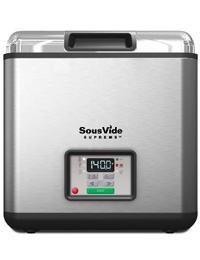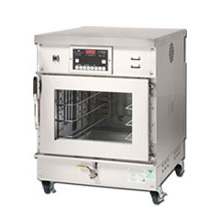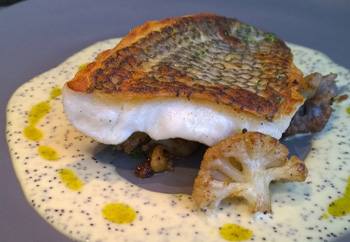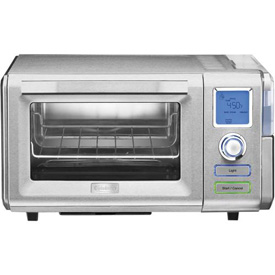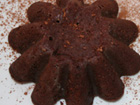Did you ever wonder how some restaurants seem to get certain proteins cooked just right? They may be using a different type of oven.
Most home cooks are only familiar with standard ovens, grills and the microwave oven for cooking food. Restaurants on the other hand have been using three additional cooking appliances for many years and now they are making there way into the home. This article will take a look at Sous Vide cookers, CVap Ovens and Combi -Ovens and how they are making there way into the home kitchen.
The Conventional Oven ---
First let's take a look at the conventional oven that most of us are familiar with. There are many problems associated with these oven that designers do not address. Among these are: the relatively lengthy time it takes ovens to heat up, the fact that temperatures can vary 10's of degree from one area of the oven to the next (in addition, hot air can easily escape when the door is open) and food can easily dry out from lack of moisture in the oven. Home ovens seem to behave differently from one to the other, having their own personality. For best results one should calibrate their oven with a digital thermometer.
Lack of Moisture -Humidity- in Traditional Ovens is a major issue for many cooks--
Humidity can have a profound effect on how food cooks. Humidity is something that traditional ovens can not seem to get right. Water molecules conduct heat much faster than air. Not only does humid air transfer heat more efficiently to food, cooking it more quickly, it also helps prevent the water in the food from evaporating, keeping the moisture locked inside. While dry heat in an oven can be a good thing when you want a deeply browned crust on a piece of meat, but it can be a problem with many types foods which you want to keep the moisture in.
NEW WAYS TO COOK FOOD
Sous Vide
Sous vide cooking is basically cooking food that is vacuum packed in a plastic bag then immersed in a water bath that is set and maintained at a specific temperature. Food cooked this way e.g., a steak at 136F will attain a perfect medium rare for 1-2 hours depending on thickness. The protein can be maintained for long periods of time without degradation. What is lacking though is most proteins will need to be seared after cooking since the Maillard Reactiondoes not occur at low temperatures, so there will be no browning on the outer surface.
Sous Vide Supreme |
|
Advantages of Sous Vide Cooking Method
--Food can be seasoned and packed with small amounts of oil, butter or stock that would normally be required in large amounts when poaching foods.
--Low and monitored temperatures can prevent meats from being overcooked
--There is little shrinkage and loss of juices
--There is enhanced nutritional quality; the sous vide technique preserves many nutritional qualities that other cooking methods tend to destroy yet provides
For a complete discussion on Sous Vide Cooking see What is Sous Vide Cooking.
CVAP Oven
The CVap oven (CV stands for controlled vapor) was originally created for Colonel Sanders (Kentucky Fried Chicken) over thirty years ago by Winston Shelton to keep chicken moist and warm for long periods of time. While with a conventional oven, moisture evaporates as food is heated, drying it out, the CVap oven produces a humid, rain forest-like environment that surrounds the food with vapor, preventing it from losing or gaining any moisture. For a restaurant like KFC, chicken that was fried in the morning and placed in a CVap stayed crisp and tasted the same no matter when it was served. At the time however the CVap was only used as a holding oven.
Today CVap ovens are used by many chefs to cook food at low temperatures in a manner similar to sous vide cooking. The CVap allows cooking either with vapor or no vapor at low temperatures. The presence of vapor speeds up the cooking time. The advantage here is no vacuum bag is required. Most major restaurant have one or more CVap's in their kitchen. chef Jean-Georges (3 star Michelin chef in NYC), use it almost exclusively.
CVap oven (Winston Industries) |
|
Since Cvap ovens having the ability to sous vide food when vacuum packed some chefs believe that over time CVap ovens may replace the current sous vide tools.
CVap ovens do have a limit at the higher range of cooking. Their temperature range is usually between 90° - 200°F. With a browning control of 1-10 which is determined by the humidity of the chamber.-
CVap vs. Sous Vide --and-- Combi Ovens vs Sous Vide
While sous vide is rather easy to use considering only temperature is a factor, CVap has two variables -- temperature and humidity. Understanding wet bulb and dry bulb temperatures makes for a learning curve for CVap oven which is minimal when using the sous vide technique.
With both CVap and sous vide you don't have to figure out how long or at what temperature is needed to cook something. One major advantage with CVap cooking is that you don't have to put the food inside a vacuum packed plastic container; you can actually cook food that looks as though it came out of a conventional oven. This is also extremely important when considering that some foods e.g., fish can be texturally altered under vacuum.
Neither sous vide cookers or CVap ovens have the ability to brown food since the temperature is below that required by the Maillard Reaction. Foods that require browning need to be seared or grilled after removing them from either Sous Vide or CVap appliances. This is usually done just prior to serving still making these methods of cooking desirable.
Cooking Fish in the CVap Oven
Many top chefs are now using CVap ovens to start the fish cooking. Chef Wyle Dufresne cooks a Mediterranean Bass for 10 minutes in a CVap oven set to 120F and then finishes the fish on a plancha skin-side down until crispy.
|
Jean George does his fish in a similar way starting from a raw state in the CVap oven -- cooking to perfection --- and then finishing skin side down. This produces 'perfect results' with a very moist white flesh and very crispy skin. Dish shown to left -- from Nougatine JG Restaurant -- Black Sea Bass with Buttermilk Vinaigrette.
|
Combi Oven
Combi means "combination" which is a mix of the hot, dry air of an oven and the wet heat of a steamer. Combi ovens can cook with ambient air (as an ordinary convection oven does), with injected steam, or with a combination of both. A combi oven is an oven with three functions: convection, steam and combination cooking. In the convection mode, the oven circulates dry heat - ideal for pastries and breads. The steam mode injects water into the oven to poach fish, rice and vegetables. This allows something like a Crème brûlée to be tackled without using a bain-marie.
A combi oven is not cheap. It costs roughly $15,000 for an oven the size of a half sheet pan and several times that for larger configurations. Miniature combi ovens designed for commercial kitchens have recently come on the market for as little as $2,000, but these use very small pans. And the technology is starting to come into the home kitchen.
Downside of Combi Ovens
Combi ovens are not able to hold low temperatures well at low temperatures (below 140o F). And, this becomes a problem when cooking fish and meat where more exact temperatures are needed. At these temperatures there can be a variation of 4-9oF whereas in sous vide the temperature will not vary more than 1-2 oF (ref. Modernist Cuisine at Home pg. 38). A few degrees can drastically alter taste and texture. See Cooking Chicken Sous Vide.
Thermador and Wolf have recently launched products joining the German Miele and Gaggenauin the area of steam ovens or combi ovens. Cuisinart (photo below) also launched a very affordable version. Alto-Shaams and Cambros have also been in the business many years.
Cuisinart Combi Oven for Home |
|
Readings and References
The Truth about Combi Ovens -- StarChefs
The Thermodynamics Of Cooking And How Different Cooking Methods Work
Are Combi Ovens the Future of Sous Vide
KitchenAid's Chef Touch: Whirlpool's Foray Into Sous Vide Appliances
An Interview with Winston Shelton
Cuisinart-combo-steam-and-convection-ovenproduct-review
Combi Ovens: The Best New Chefs Tool
Nathan Myhrvold’s Recipe for a Better Oven --We cook our food using technology invented to bake bricks. We can do a lot better -- june 2014
Why is Humidity Important in Cooking
